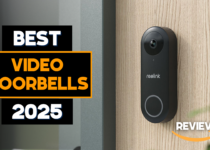The Best 3D Printers for 2024
With prices at an all-time low, 3D printers are experiencing a surge in popularity for personal, professional, and educational purposes. Before making a purchase, here’s a comprehensive guide covering everything you need to know, along with our top model recommendations based on hands-on testing.
Just over a decade ago, 3D printers were massive, costly machines primarily found on factory floors or within well-funded corporations, with limited recognition beyond professional circles. However, thanks largely to the RepRap open-source 3D printing movement, these remarkable devices have become affordable and practical tools for a diverse range of users, including designers, engineers, hobbyists, schools, and consumers.
Modern 3D printers are designed for specific applications, catering to various types of printing needs. Professional models, like the Ultimaker S5, often feature a closed frame with transparent doors and sides. On the other hand, midrange options like the Original Prusa i3 MK3S+ and many budget models typically have open frames, providing a larger build area for the price. While high-end models such as the Ultimaker S5 may exceed $6,000, entry-level models are available for $200 or less, and there are even models designed for kids.
For those considering a 3D printer purchase, understanding the differences between models is crucial for making the right choice. In this overview, we provide brief reviews of the top models we’ve tested, each catering to specific uses and user preferences. Following that, we delve into a more detailed discussion of 3D printer specifications and technology. If you’re gearing up to explore the world of 3D printing, read on for valuable insights.
Deeper Dive: Our Top Tested Picks
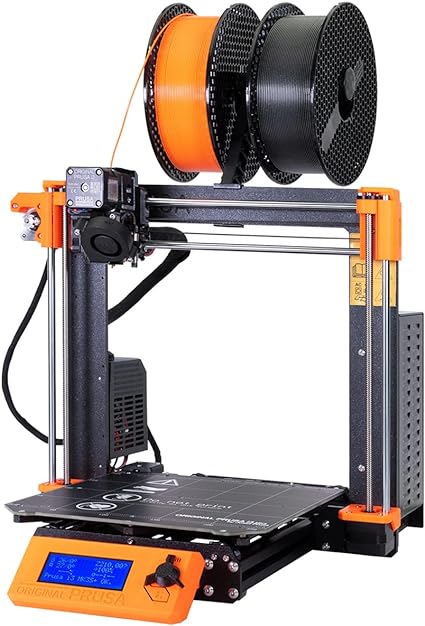
1: Original Prusa i3 MK3S+
Best Overall 3D Printer for Serious Hobbyists, Makers
Why We Picked It
The Original Prusa i3 MK3S+ stands as the flagship model in Prusa Research’s 3D printer lineup, representing the culmination of a decade’s worth of advancements and refinements. This latest iteration boasts a polished open-frame design, free from apparent flaws and backed by a robust network of community support and help features. In contrast to the basic user manuals provided with many 3D printers, the i3 MK3S+ comes with a meticulously crafted, professionally printed guide. This comprehensive guide covers both the preassembled version, which was the focus of our review, and the kit version, offering users valuable insights and instructions.
During our testing, the Original Prusa i3 MK3S+ demonstrated seamless operation, producing prints without any errors, and consistently delivering prints of above-average quality. The versatility of this 3D printer is highlighted by its support for various filament types, and it even comes with a 1-kilogram spool included, adding to the convenience and value for users.
Who It’s For
The preassembled version of the i3 MK3S+ caters to a broad spectrum of users, ranging from absolute beginners to seasoned 3D printing veterans. Its user-friendly design makes it an excellent choice for educational settings such as classrooms or community centers. For those looking to save some money, there is also a kit version available. However, assembling the kit may require at least an afternoon, and it’s advisable for more experienced users or those who enjoy tinkering with technical setups.
Pros
- Consistently high-quality prints
- No misprints in our testing
- Easy-to-use, yet powerful, software
- Supports multiple filament types
- Includes a 1-kilogram PLA spool
- Professionally printed user guide and great support resources
Cons
- Build volume a bit small for the price
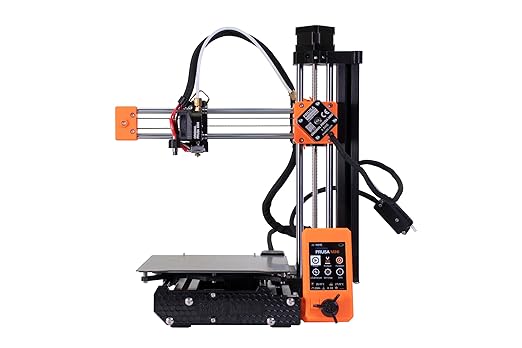
2: Original Prusa Mini
Best Overall Budget 3D Printer
Why We Picked It
The Original Prusa Mini is a compact, open-frame 3D printer that consistently delivered high-quality prints during our testing. While it features a slightly smaller build area compared to the Original Prusa i3 MK3S+, it comes at a more affordable price point. The Mini does require some assembly and calibration, making it a suitable option for users who are comfortable with these tasks. Despite its compact size, this printer proves to be a cost-effective choice for those seeking reliable 3D printing capabilities.
The Original Prusa Mini comes complete with a meticulously crafted user guide, showcasing the attention to detail in its design. Users also benefit from access to Prusa Labs’ extensive help resources and forums, adding a valuable support network. This printer supports a wide variety of filament types, providing flexibility for different printing needs. Additionally, it includes the company’s PrusaSlicer software, offering an alternative to the popular Cura open-source 3D-printing program and contributing to a comprehensive printing experience.
Who It’s For
The Prusa Mini proves to be an excellent choice for users ranging from beginners to those with intermediate experience in 3D printing. Its suitability extends to educational or public settings, making it an effective tool for teaching or demonstrating 3D printing processes. If a larger build area is desired, users may want to consider the Original Prusa i3 MK3S+. The Prusa Mini is available only in kit form, and the assembly process, especially aligning the nuts and bolts on two separate parts, may pose a slight challenge. However, with construction typically taking only a couple of hours, it remains one of the simpler kits available. While not entirely plug and play—unlike the Monoprice Mini Delta V2 3D Printer which comes closer to that description—the Prusa Mini’s preassembled components contribute to a straightforward assembly process, making it a worthwhile choice for those willing to invest a bit of patience.
Pros
- Top-notch object quality
- Supports a variety of filament types
- Useful, professionally printed user guide
- Great support resources
- Versatile, user-friendly software
Cons
- First-layer calibration can be tricky
- Only includes starter packets of filament
- Requires monitoring if young children or pets are around
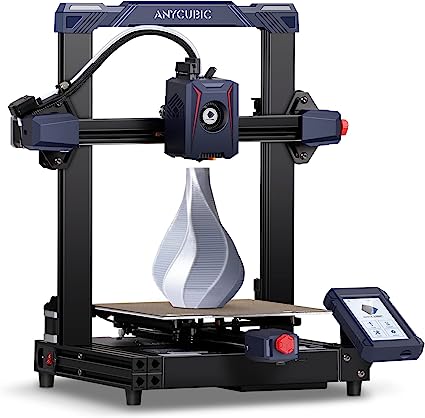
3: Anycubic Kobra 2
Best Budget 3D Printer for First-Timers
Why We Picked It
When evaluating entry-level 3D printers, key factors include affordability, ease of setup and operation, reliable performance, and high print quality. The Anycubic Kobra 2 excels in meeting these criteria and stands out as one of the fastest 3D printers in our testing. Priced at just $279, it combines cost-effectiveness with user-friendly features. The printer’s unique extruder is designed for optimal speed during printing. In terms of software compatibility, it works seamlessly with the popular open-source Cura program, widely used across various 3D printers. Additionally, the Anycubic Kobra 2 comes with the Prusa Slicer app, offering a plethora of editing options suitable for both new and advanced users.
Who It’s For
The Anycubic Kobra 2 proves to be an excellent choice for beginners due to its affordable price, straightforward setup, and rapid operation. While it demonstrated nearly error-free output in our tests, the print quality may not be considered exceptional, particularly in terms of detailing. This aspect might make it less optimal for intermediate or expert users seeking higher precision. Nonetheless, for newcomers entering the realm of 3D printing, the Anycubic Kobra 2 serves as a commendable and low-risk starting platform, providing an accessible introduction to the technology.
Pros
- Affordable
- Prints fast and accurately
- Easy to assemble
Cons
- Very noisy fans
- Leveling software is inconsistent
- Can get worryingly hot

4: Creality Ender-3 S1 Pro
Best Budget 3D Printer for DIY-ers
Why We Picked It
The Creality Ender-3 S1 Pro stands out as a cost-effective open-frame 3D printer, delivering a sizable print area relative to its price. Despite being a kit, the S1 Pro is mostly preassembled, making it accessible even for those with limited technical expertise, and it demonstrated the capability to produce quality prints during our testing.
In terms of software compatibility, users have the option to utilize either Cura or the company’s own Creality Slicer. The Ender-3 S1 Pro supports a diverse range of filament types, including PLA, ABS, PETG, PA, wood composite, and TPU. While its print-bed leveling process, combining manual and automatic routines, proved slightly cumbersome, it was still easier compared to other Creality printers we’ve reviewed. The setup instructions could be improved, with cramped diagrams, but helpful videos and other resources from third-party sites are available to assist users in getting acquainted with the printer.
Who It’s For
The Creality Ender-3 S1 Pro is designed for 3D printing enthusiasts who are newcomers with a do-it-yourself (DIY) mindset or budget-conscious tinkerers. If you prefer a plug-and-play 3D printer for a quick start, this may not be the ideal choice, as print-bed leveling can pose a challenge. However, the assembly process of this relatively simple kit provides a valuable learning experience about the inner workings of 3D printers. Despite the initial setup complexities, the Ender-3 S1 Pro caters to individuals who enjoy the DIY aspect and are willing to invest time in the assembly process.
Pros
- Easy assembly
- Supports many filament types
- Generated nicely detailed test prints
Cons
- Auto-leveling program could be more accurate, may require slight adjustments
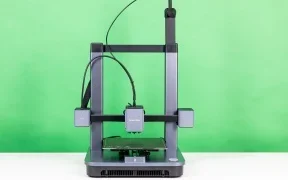
5: AnkerMake M5C 3D Printer
Best Budget 3D Printer for Fast Printing
Why We Picked It
The AnkerMake M5C open-frame 3D printer stands out for its user-friendly assembly and operation. Priced reasonably, it offers a generous print area and consistently produced high-quality prints, even with the default settings in the slicer software. The added convenience of controlling the printer from a mobile device enhances its usability. Notably, the M5C features a fast 500mm-per-second mode, providing users with an efficient printing option.
This 3D printer supports a wide range of filaments, including PLA, PLA+, PETG, ABS, TPU, carbon fiber, and wood composite. AnkerMake provides its own software for print preparation, but users also have the option to use UltiMaker Cura or PrusaSlicer, offering flexibility in software choices. Overall, the AnkerMake M5C combines ease of use, versatility, and quality prints, making it a commendable option for 3D printing enthusiasts.
Who It’s For
The AnkerMake M5C doesn’t just provide a great 3D printing experience but also adds extra value with its included tool kit. This toolkit, equipped with Allen wrenches, a filament cutter, and an extra extruder nozzle, enhances the overall package. Priced at $400, the M5C proves to be an excellent choice for individuals just starting their 3D printing hobby, offering a comprehensive and user-friendly solution. Its appeal extends to both beginners and experienced 3D printing enthusiasts, making it a versatile and valuable option in the market.
Pros
- Great quality prints
- Fast standard print speed
- Print bed offers large print volume and easy print removal
- Quick assembly
- Easy-to-use slicer software
Cons
- Requires Wi-Fi to connect to a PC
- No real-time video monitoring or time-lapse capability
- No on-device screen or control panel
- Needs mobile app to load and unload filament
How Do You Connect to a 3D Printer?
Most 3D printers typically start the printing process through a computer connected via USB. Some models incorporate internal memory, allowing them to store print jobs in RAM, ensuring continuity even if the USB cable is unplugged or the computer is powered down. This feature is particularly crucial for lengthy and intricate prints that can extend over several hours.
A select few printers provide the convenience of Wi-Fi or peer-to-peer wireless connections. However, the drawback of wireless options is that the transfer of 3D printing files, often exceeding 10MB in size, can be time-consuming. Another connectivity option is Ethernet, allowing printers to be shared on a local network.
Many printers feature SD or microSD card slots, enabling users to load and print 3D object files directly from the printer’s control panel and display screen. Alternatively, some models come with ports for USB flash drives. Printing directly from flash media eliminates the need for a computer during the process. However, this method introduces an extra step—the transfer of files to the storage card.
Typically, printers offer a variety of connectivity options, including USB, wireless, SD card, or USB flash drive, catering to diverse user preferences. It’s worth noting that a few models may omit certain connection options based on their design and intended use.


